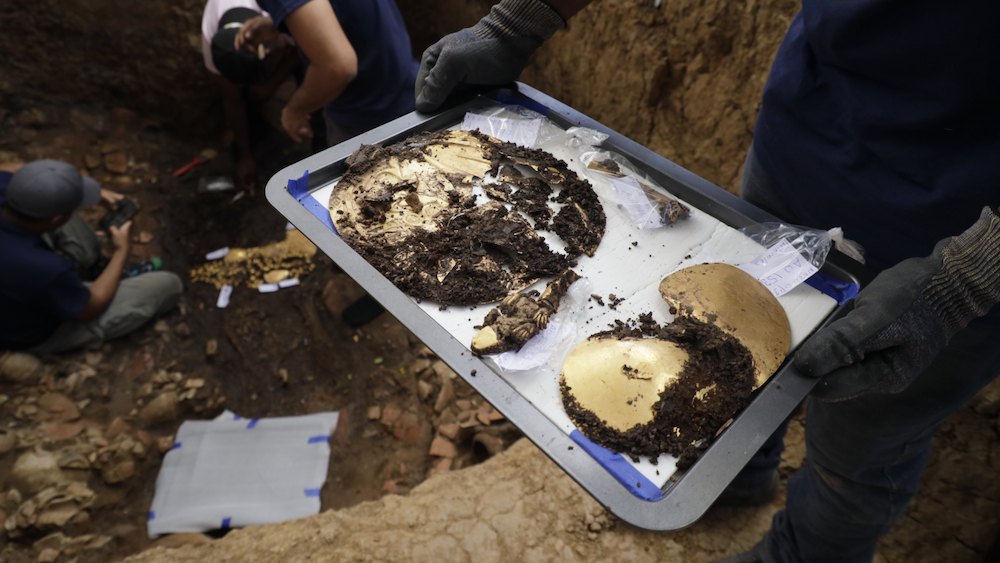Researchers have unveiled the secrets of an ancient tomb in Panama’s Coclé province. The tomb dating back over 1,200 years on the rituals and societal structures of the Gran Coclé civilization.

Also Read: World’s Oldest Fossilized Forest Dating Back 390 Million Years Discovered in UK
Dating back to around 700 CE the newly discovered tomb offers insight into the ceremonial practices and societal structures of the ancient Coclé civilization.
As excavations progressed, the team uncovered the remains of a revered religious leader, aptly named the “Lord of the Flutes” due to the presence of animal bone flutes accompanying his burial.
Dr. Mayo noted that the positioning of the Lord’s body, along with the array of gold and ceramic artifacts found within the tomb.
According to Dr. Mayo these companions were likely sacrificial offerings intended to accompany the Lord on his journey to the afterlife.
Flourishing between 200 CE and the arrival of the Spanish in 1550 CE, the Gran Coclé civilization left behind a rich legacy, characterized by pottery styles and metalwork.
The discovery is another chapter to the ongoing excavation efforts aimed at revealing the mysteries of this ancient society.
Situated approximately 100 miles southwest of Panama City, the El Caño Archeological Park has been a point for archaeological exploration since its discovery in 1927.
Over the years the park has yielded numerous finds including the latest discovery of the opulent tomb of a Coclé lord. The newly uncovered tomb belonged to an esteemed Coclé lord who lived around 750 to 800 CE.
Also Read: Europe’s Largest Mass Grave With 1000 Skeletons Discovered in Germany
The passage of centuries the tomb preserved a treasure trove of artifacts, including gold trinkets such as pectorals, breastplates, earrings, necklaces, and bone flutes. These items offer insights into the wealth and craftsmanship of the ancient civilization.
Much like their counterparts in ancient Egypt the Gran Coclé practiced ritualistic burial customs, including retainer sacrifices.
The tomb contained not only the remains of the lord but also those of numerous companions up to 32 individuals.
The central figure in the tomb, dubbed the “Lord of the Flutes,” was likely a religious leader, as indicated by the presence of ceremonial bone flutes alongside his remains. This addresses the importance of religious practices within Coclé society.
The positioning of the lord’s body, adorned with elaborate gold adornments, underlines his elevated status within the society.
The burial of multiple individuals alongside the lord shows their role as sacrificial companions in the afterlife.
The artifacts discovered in the tomb, including those stylistically similar to items from the Quimbaya region of Colombia, highlight the cultural exchange and trade networks that existed between different ancient civilizations.
This shows the interconnectedness of societies across Central and South America during this period. Researchers face challenges in preserving and analyzing the remains due to the region’s hot and humid climate. Previous attempts to extract DNA from human bones have been unsuccessful.
Also Read: Dinocephalosaurus Orientalis: Palaeontologists Unveil 240 Million Year Old Dragon
























